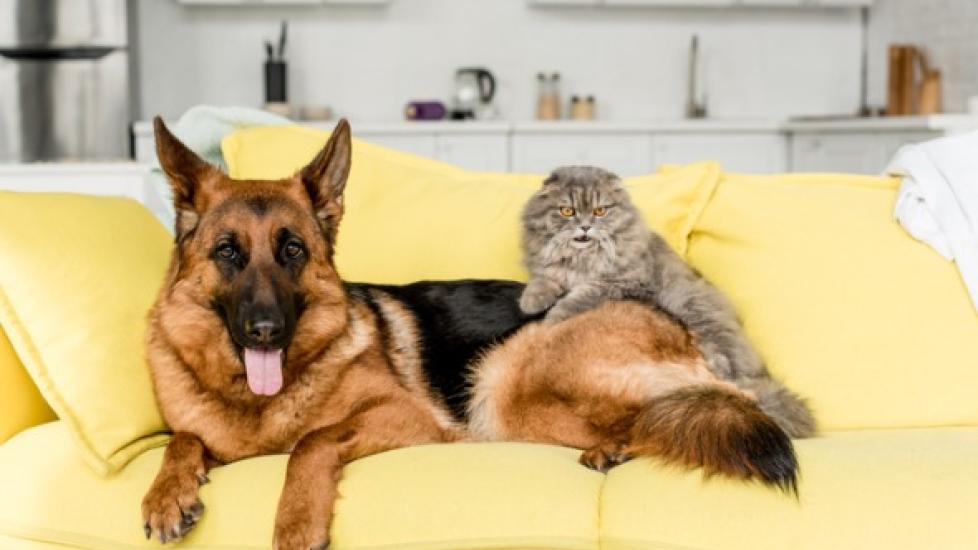Top 10 Ways to Reduce Zoonotic Diseases
Reviewed and updated for accuracy on May 28, 2020 by Jennifer Coates, DVM
While we love are pets and enjoy cuddling, snuggling, and sharing spaces, there are a diseases that can be transfered from them to us. Here's what you need to know about zoonotic diseases and how to reduce your risk of exposure.
What Is a Zoonotic Disease?
Zoonotic diseases are diseases that can be transmitted from animals to humans. Zoonotic diseases come in the form of bacteria, viruses, fungi, parasites, and unconventional pathogens like prions.
There are over 250 zoonotic organisms, with only about 40 being transmitted from dogs and cats. The rest of the zoonotic organisms are transmitted from birds, reptiles, farm animals, wildlife, and other animals.
The good news is that a majority of zoonotic diseases can be prevented by following basic hygiene guidelines, as well as following routine veterinary care guidelines for your pet.
10 Ways to Reduce Risk of Zoonotic Diseases
The following is a list of the top ten ways you can reduce the risk of zoonotic diseases.
1. Wash your hands.
This may sound like a simple thing to do, but the truth is, many people do not wash their hands when they should, or they do not wash for long enough. A quick rinse under the tap is far from adequate. Use soap and a constant stream of water, scrubbing for a minimum of 20 seconds. Have your kids sing the alphabet song for a good measure of scrubbing time.
Wash hands before eating, after touching animals (particularly farm, petting zoo, or exotic species) or their environments, after removing soiled clothing, after contact with soil, and after using the bathroom. Hand sanitizer is good at reducing the number of germs, but is inadequate for removing organic debris, which is where bacteria, viruses, fungi, or parasites can hide.
2. Manage the feces.
Scoop the litterbox at least every 24 hours. There are particular organisms, including Toxoplasma gondii, which are shed in cat feces that do not become infective until after 24 hours. The same is true for various parasites found in dog feces. By scooping the litterbox or cleaning the yard daily, you are greatly reducing the number of infective parasites present.
3. Avoid contact with wild animals.
Wild animals, even cute baby bunnies, can carry several contagious organisms, yet seemingly appear to be healthy. Wild animals are just that, wild.
4. Have your bird tested for Psittacosis.
Pet birds can carry an organism called Chlamydophila psittaci, which causes a disease known as psittacosis. This bacterium is shed in feces, ocular secretions, and nasal secretions of birds. Infection in people can be very serious.
5. Cover the sandbox.
Stray or outdoor cats view your sandbox as a luxury sized litterbox. By keeping it covered when not in use, you are preventing cats from eliminating in the sand, thereby reducing the risk of serious conditions caused by roundworms and other parasites.
6. Use monthly heartworm preventive religiously.
Many brands of heartworm preventive also contain dewormers. Dogs and cats are often times re-infected with intestinal parasites, several of which can be removed on a monthly basis by staying up to date on heartworm preventive.
7. Don’t eat or feed raw or undercooked meat.
Cooking meat to the appropriate temperature is an important step to prevent bacterial and parasitic infections. Many types of parasitic larvae will inhabit the muscle of certain animals, just waiting to be ingested so they can develop into adult parasites. Bacterial contaminants will also be killed by the heat of cooking.
8. Use flea and tick preventives.
Fleas and ticks can carry a variety of infectious diseases that can be transmitted from animals to people, sometimes via pets. By using flea and tick preventives, you are reducing the number of infectious disease carriers that enter your house.
9. Prevent your pet from drinking contaminated water.
Water that has been contaminated by other animals, either by feces or urine, has the potential to contain a multitude of infectious organisms that your pet can then transmit to you. It is a good idea to bring a bowl and fresh water with you on your outdoor excursions.
10. Keep up on routine veterinary care.
Routine veterinary care, including fecal tests, blood tests, and vaccinations (rabies, for example), are very important and should not be ignored. Consider it not only for your pet’s health, but also for the health of you and your family.
People who have a weakened or a compromised immune system, such as those who are receiving chemotherapy or other immunosuppressive drugs, who have HIV, or who are chronically ill, are at a much higher risk of developing severe zoonotic diseases. Strict guidelines must be followed to reduce risk of zoonotic disease transmission. In some cases, this may include complete avoidance of farm animals, petting zoos, and exotic species.
There are countless benefits to owning a pet. By following these top ten guidelines, you will greatly reduce the risk of zoonotic diseases and help keep you and your family healthy.
References:
Rouffignac M. Pets and Zoonotic Considerations. South Perth, Western Australia: World Small Animal Veterinary Association World Congress Proceedings. 2007.
Koar K. Zoonotic Diseases. Bryn Mawr, PA: Atlantic Coast Veterinary Conference. 2007.
Baneth G. Pets as Reservoires for Zoonotic Diseases. Rehovot, Israel: World Small Animal Veterinary Association World Congress Proceedings. 2007.
Mitchell M. Zoonotic Disease Concerns with Exotic Pets. Urbana, IL: AtlanticCoast Veterinary Conference. 2008.
Lappin MR. Zoonotic Diseases: What You Can Catch at Work. Fort Collins, CO: British Small Animal Veterinary Congress. 2010.
Featured Image: iStock.com/LightFieldStudios
